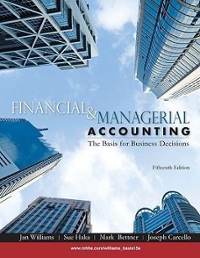Question
Marios Nursery uses a perpetual inventory system. At December 1, the perpetual inventory records indicate the following quantities of a particular blue spruce tree: Quantity
Marios Nursery uses a perpetual inventory system. At December 1, the perpetual inventory records indicate the following quantities of a particular blue spruce tree: Quantity Unit Cost Total Cost First purchase (oldest) 110 $ 15.00 $ 3,350Second purchase 110 28.50 3,520 Third purchase 100 39.00 3,900 Total 350 $ 10,570 A year-end physical inventory, however, shows only 310 of these trees on hand. In its financial statements, Marios values its inventories at the lower-of-cost-or-market. At year-end, the per-unit replacement cost of this tree is $40. (Use $3,500 as the "level of materiality" in deciding whether to debit losses to Cost of Goods Sold or to a separate loss account.) a. Prepare the journal entries required to adjust the inventory records at year-end, assuming that Mario's uses 1. Average cost, 2. Last-in, first-out. (Omit the "$" sign in your response.) General Journal Debit Credit1. 2. b. Prepare the journal entries required to adjust the inventory records at year-end, assuming that Mario's uses the first-in, first-out method. However, the replacement cost of the trees at year-end is $20 apiece, rather than the $40 stated originally. [Make separate journal entries to record (1) the shrinkage losses and (2) the restatement of the inventory at a market value lower than cost. Record the shrinkage losses first.] (Omit the "$" sign in your response.) General Journal Debit Credit1. 2.
Step by Step Solution
There are 3 Steps involved in it
Step: 1

Get Instant Access to Expert-Tailored Solutions
See step-by-step solutions with expert insights and AI powered tools for academic success
Step: 2

Step: 3

Ace Your Homework with AI
Get the answers you need in no time with our AI-driven, step-by-step assistance
Get Started


